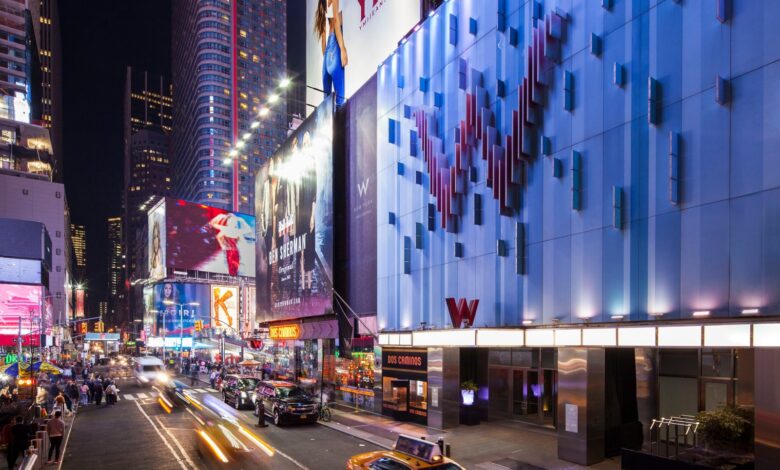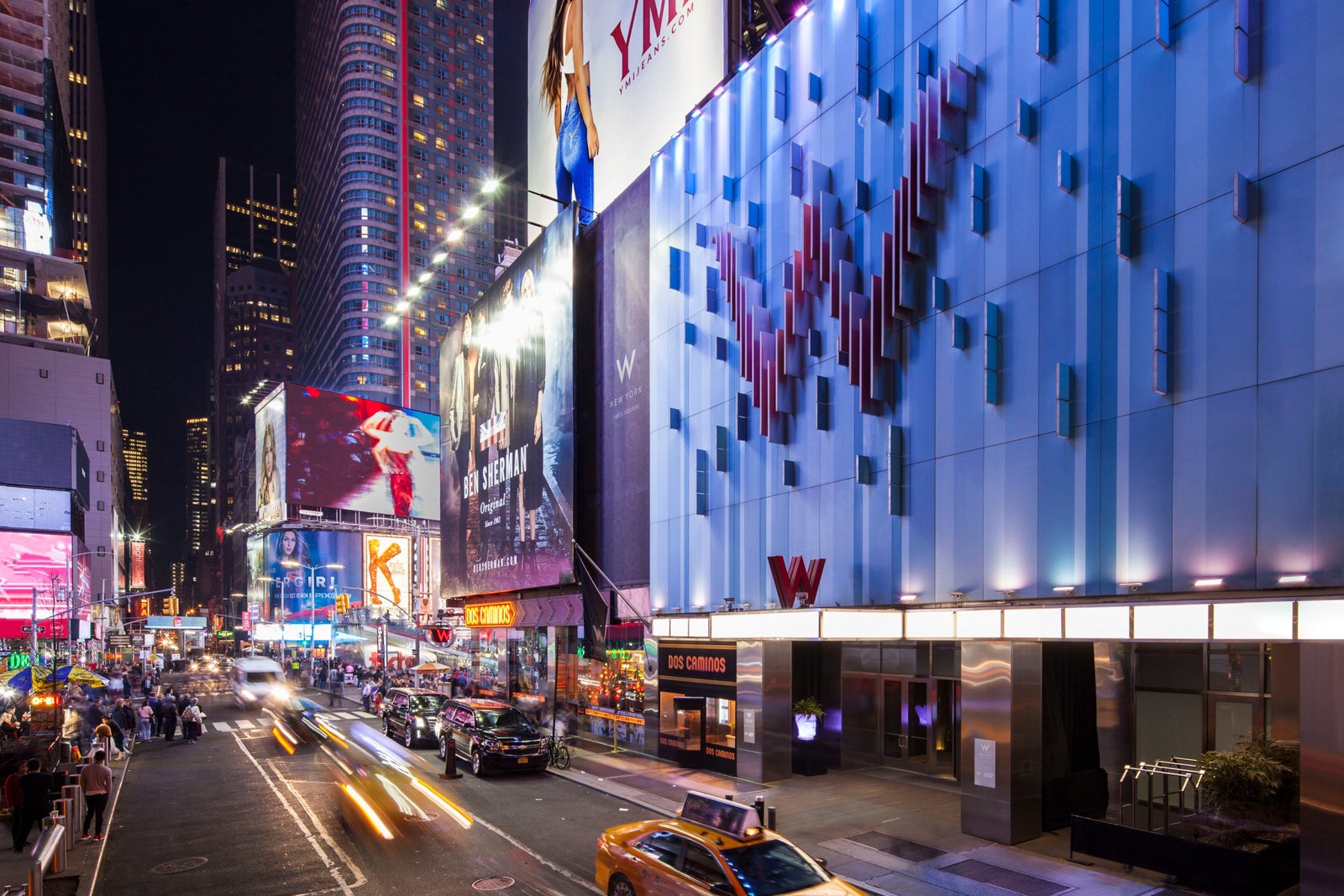Marriott customers flock to Europe and Asia. That doesn’t mean hotel bargains are coming to the U.S.


Emily might be in Paris, but she and her fellow Americans this summer can also be found en masse in Rome, London, Thailand and many other international destinations.
Marriott International reported Tuesday a $726 million profit for the second quarter that was driven by revived travel demand in China as well as the ongoing recovery of business travel and group travel demand in the U.S. and Canada. City hotels that lagged in recovery relative to leisure destinations are also roaring back to life. It was a strong showing for Marriott, as the company’s profitability was up from the $678 million haul seen in the same quarter last year.
If there were any dings on the otherwise perfect report card, it’s that the company’s leisure business in Canada and the U.S. basically remained unchanged from a year ago — only rising 1%. You can look to the packed planes heading out of the country this summer as to what’s driving this trend.
“It’s clear when you look at the travel patterns this year, there is a big exodus of Americans going over to Europe and other places in the world,” Leeny Oberg, Marriott’s chief financial officer and executive vice president of development, said on a company investor call.
Leisure room nights booked from American and Canadian travelers to Marriott-affiliated hotels in the Asia-Pacific region jumped 90% from a year ago, added Marriott’s CEO Anthony Capuano. It was a more than 20% increase in Europe.
Luxury hotel performance for Marriott (this includes brands like JW Marriott, Ritz-Carlton and W Hotels) in the U.S. and Canada from April through the end of June was actually down 1.4%, but the company isn’t chalking this up to a loss. This is part of a broader industry trend — and rates are still expensive here in the U.S.
“Certainly we do attribute it to the reality that a year ago in the second quarter, there were meaningfully fewer choices for travel,” Oberg said. “There really were consistent restrictions for going overseas.”
But don’t take the softness in luxury hotel performance, or that the company is still down 3% from global pre-pandemic occupancy levels, as a signal Marriott might start discounting room rates to boost demand. Capuano pointed to ongoing recovery in business and international travel as well as China still not being back to its pre-pandemic airline capacity as various signs there is still more demand out there to fill up hotel rooms.
Further, both Capuano and Oberg noted the second quarter of last year in the U.S. was particularly robust because of the limited options of going abroad. Flat performance means rates are still high, and deals aren’t exactly appearing for travelers. Luxury hotel performance in the U.S. is actually strengthening in major cities, which lagged compared to leisure markets like South Florida and elsewhere in the Sun Belt.
Reward your inbox with the TPG Daily newsletter
Join over 700,000 readers for breaking news, in-depth guides and exclusive deals from TPG’s experts.
“The rates hardly moved in the U.S. and Canada [in the second quarter], and that was off of a year last year in [the second quarter] where luxury rates were extraordinary,” Oberg added. “There is normalization going on. There is definitely a more seasonal pattern to travel and, frankly, a nice sturdy mix of leisure, business, transient and group that support pricing going forward for the industry, we think.”
A new Marriott brand for Europe?
It’s hard to find any major hotel company that hasn’t launched a new brand or two this year. Marriott acquired City Express, an affordable Mexico-based midscale brand that could potentially grow into other parts of the world. Earlier this summer, it also announced MidX Studios, an affordable extended-stay brand targeting travelers who require a stay of 20 nights or longer.
But there might be a midscale brand offering planned for Europe, the Middle East and Africa (or what Marriott leaders describe as the EMEA region).
“I think it’s important to note that we think there’s lots of room for us to have growth across all segments around the world and our existing brands,” Oberg said. “For example, we’re excited about what we see as possibilities for a conversion midscale brand in EMEA.”
She added more details would come in the latter part of this year. A Marriott spokesperson later clarified to TPG that Marriott leaders are already in discussion with owners in the region about this “midscale brand extension.” Conversion brands work by enabling owners of existing hotels to renovate and convert into the new branding requirements associated with that platform.
When you see a Holiday Inn change affiliation into a Fairfield Inn & Suites or vice-versa, that’s a conversion.
No new details on MGM but plenty of hints on tech
Marriott leaders remain pretty tight-lipped on how the upcoming MGM Resorts partnership will look like for Marriott Bonvoy members. Details on how that linkage will work are expected before the deal officially starts in October.
Though, the partnership does appear on track to be more of an expansive relationship than what MGM currently has with Hyatt, which lapses at the end of September. The Marriott deal even includes a new brand title: the MGM Collection with Marriott Bonvoy.
“What I can tell you is the structure of the transaction is much more akin to a traditional franchise deal,” Capuano said. “We are getting paid on room revenue across their U.S. portfolio of 17 resorts. It’s not just some sort of loyalty lockup.”
But that partnership isn’t the only change in the works at Marriott. Capuano hinted a major technology overhaul is in the works and will start rolling out in the coming years.
“We are in the process of a major global transformation of our digital and core technology. We will be launching new reservations, loyalty and property management platforms over the next several years and look forward to the numerous capabilities these new systems will offer,” Capuano said before adding of the MGM deal: “We are adding new offerings and experiences and segments where we believe there are strong consumer interests beyond our current brands.”
Some of the technology development has been hinted at in the past. Job listings at Marriott in recent years included details the company was looking at retiring its existing reservations platform for one that encompassed all its offerings, including Homes & Villas by Marriott Bonvoy, the Ritz-Carlton Yacht Collection and all-inclusive resorts.
Additionally, Capuano said the company was exploring ways to incorporate artificial intelligence, or AI, to “remove friction for our guests to create capacity for our associates” but in “a way that is mindful” of how rapidly the technology is evolving and around areas like privacy.
“At the end of the day, we do believe that it is the person-to-person and the experiential part of our business that that makes it so unique,” Oberg added. “So, being able to use generational AI in a way that enhances that service, we see as a real benefit — but never to take away from the fundamental people-to-people part of our business.”
Related reading:




